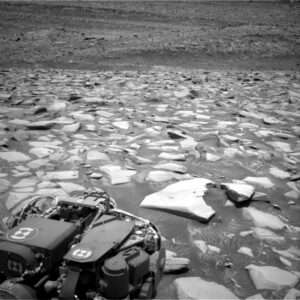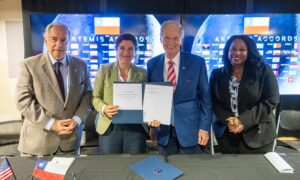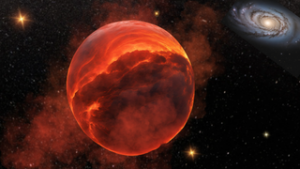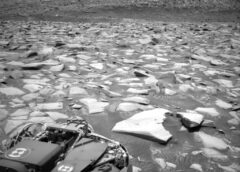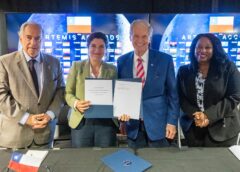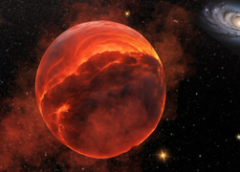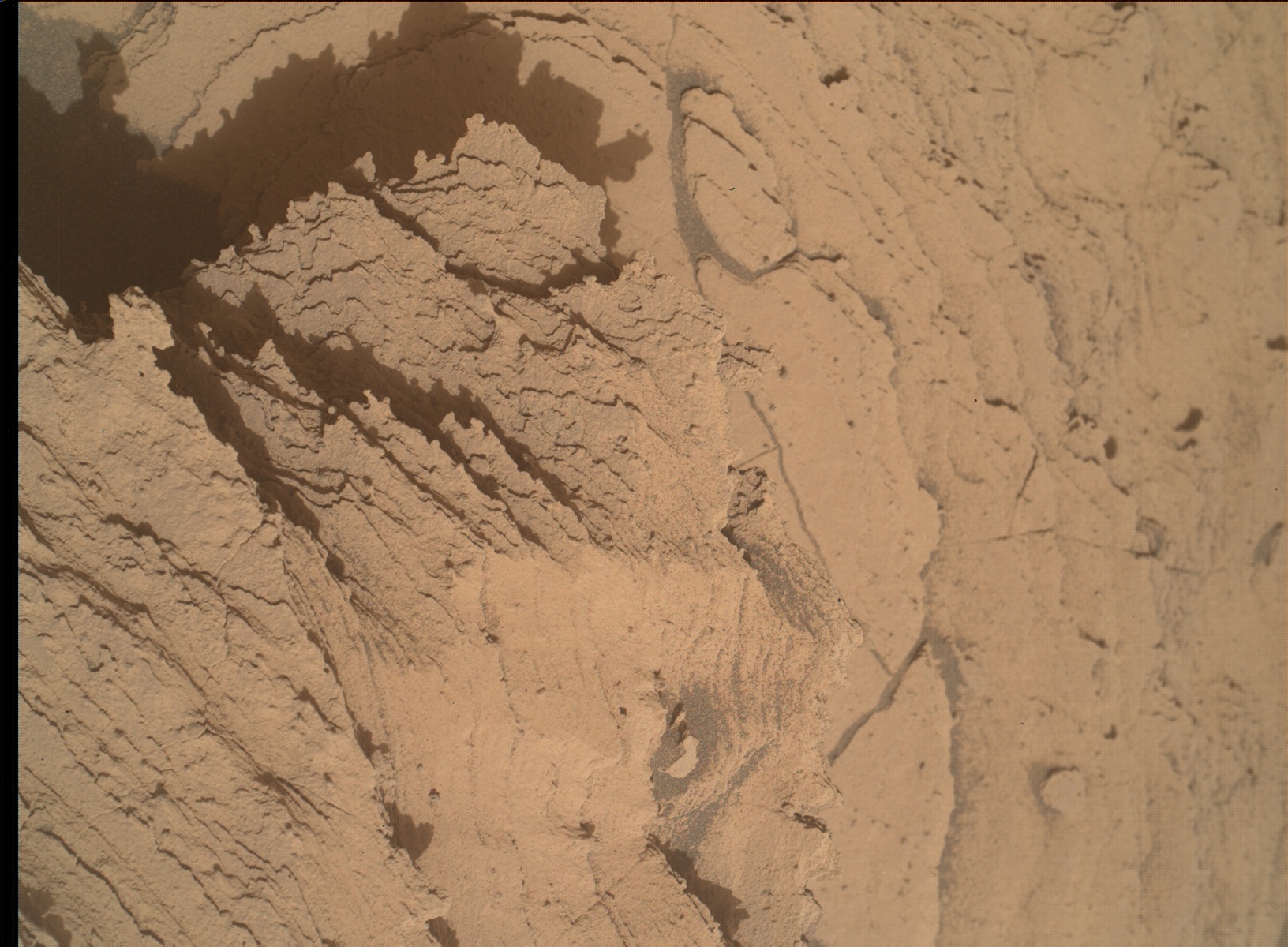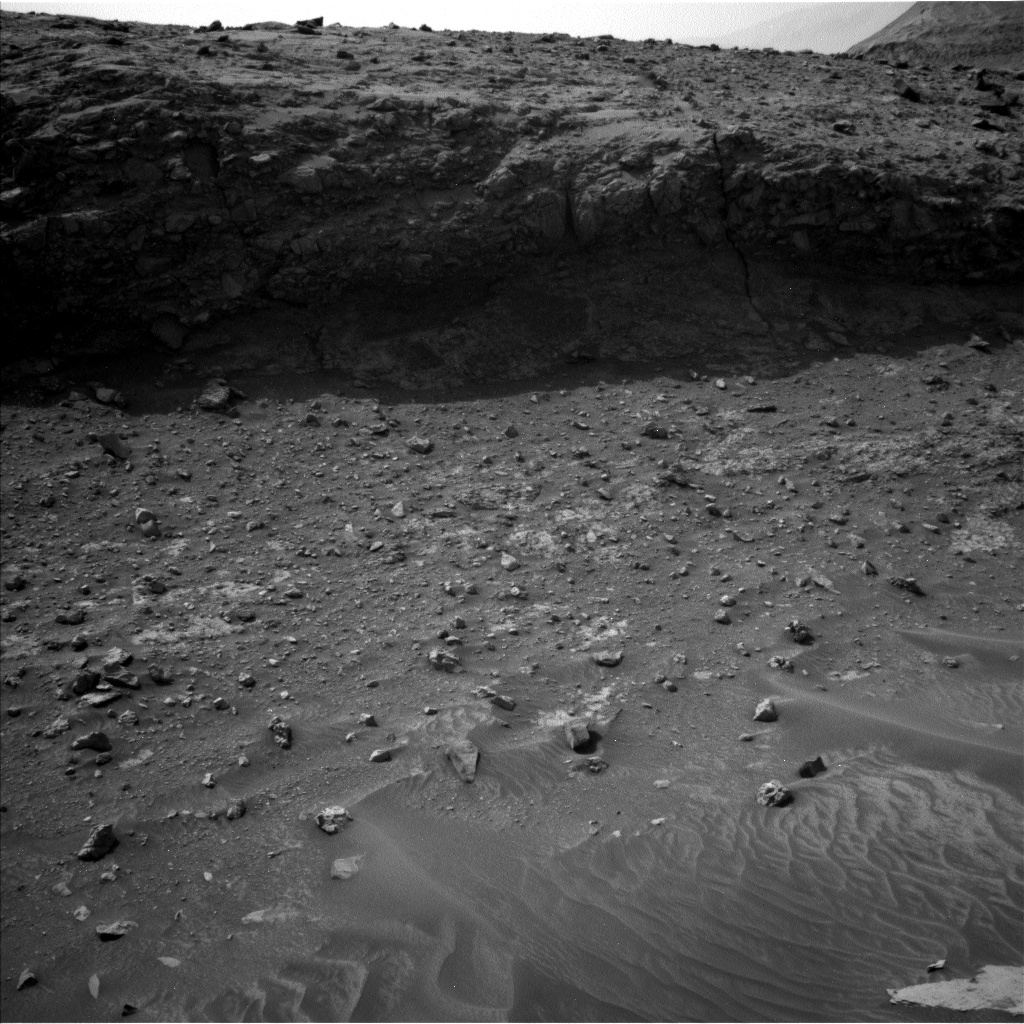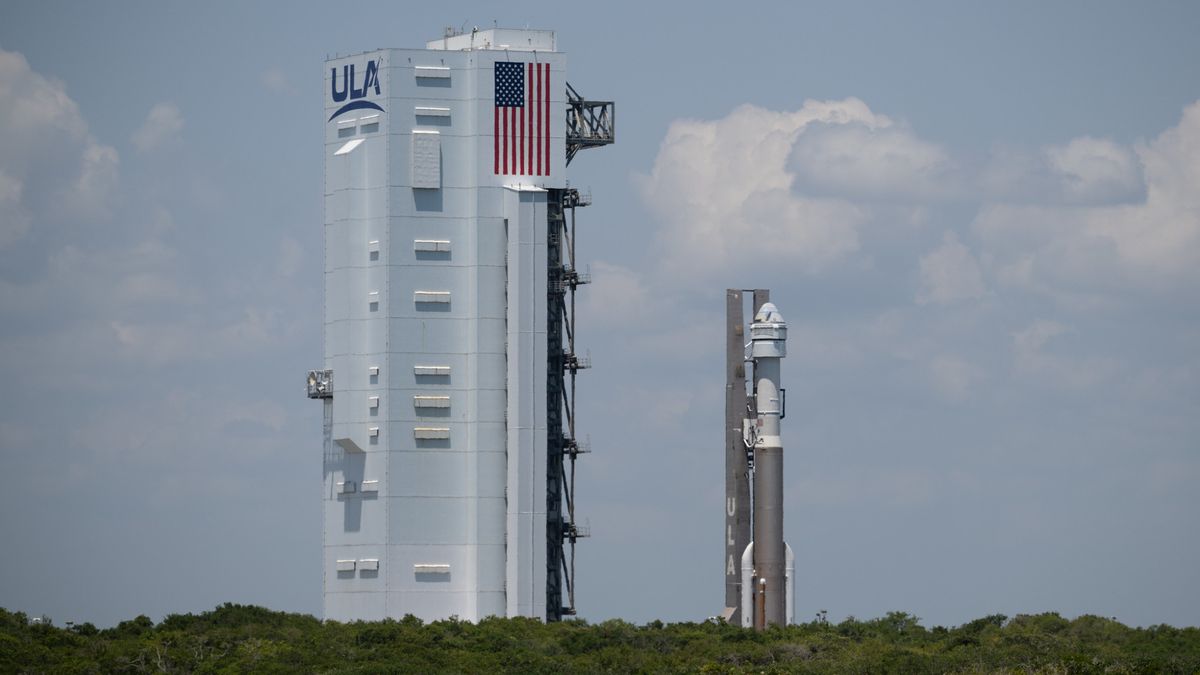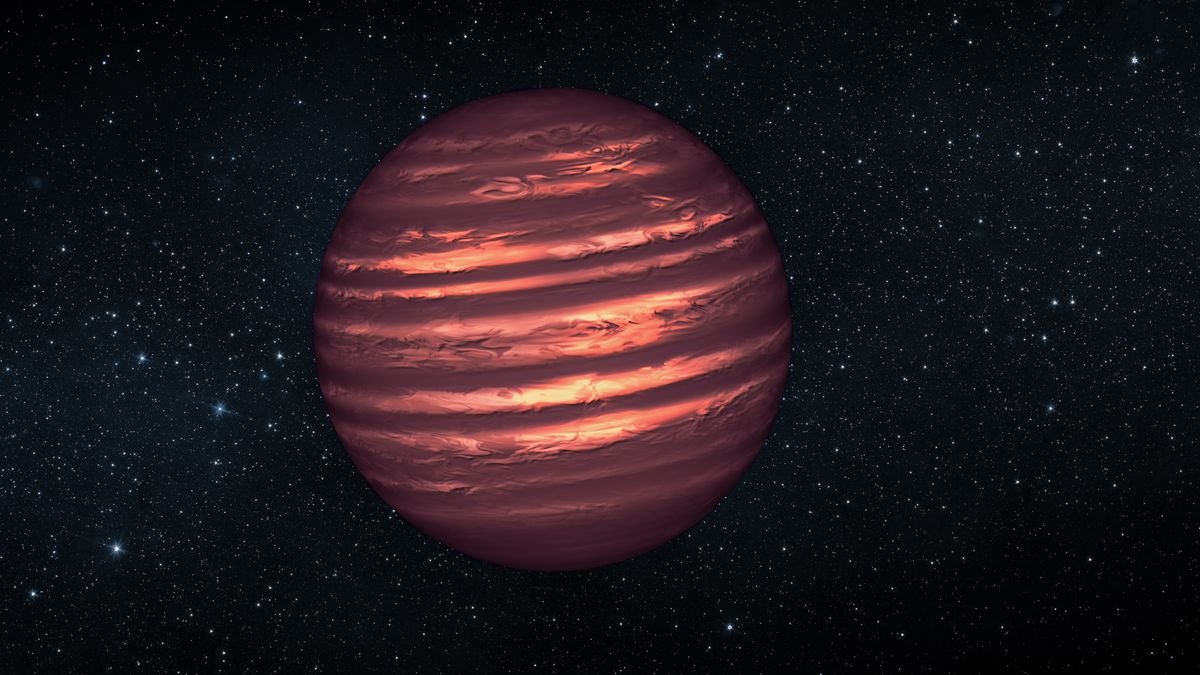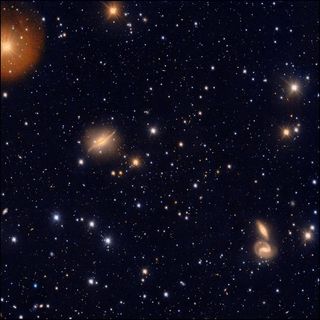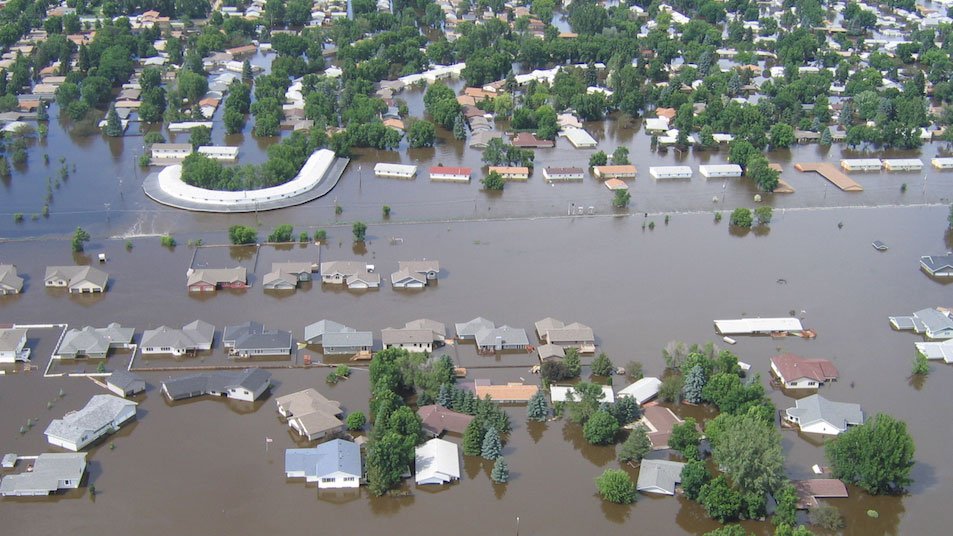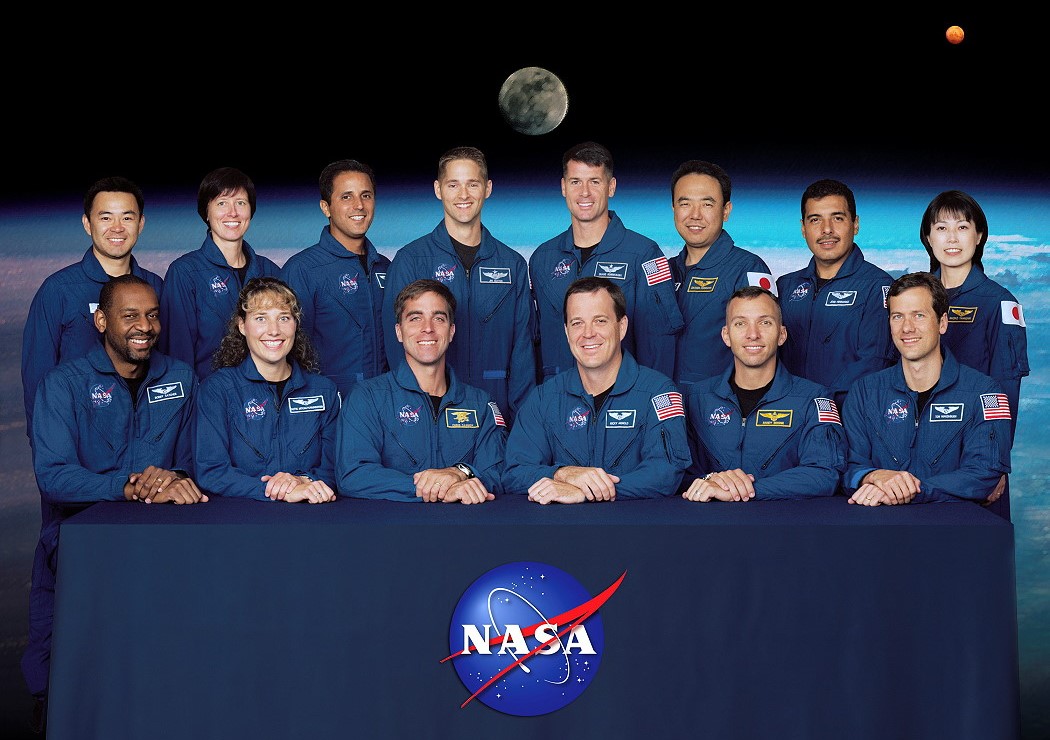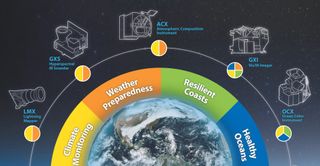3 min read Sols 4180-4182: Imaging fest! This Mars Hand Lens Imager (MAHLI) image shows all the features and textures we have in the area ranging from laminae to little nodules. The image was taken on May 7, 2024, Sol 4178 of the Mars Science Laboratory Mission, at 23:20:40 UTC. NASA/JPL-Caltech/MSSS Earth planning date: Wednesday, May 8, 2024 What a wonderful sight to see all the sedimentary structures. I am a geochemist, but I hear the excitement in the voices of my sediment-specialist colleagues, discussing all those textures and things to…
Read MoreSols 4178-4179: The Pinnacle Ridge Scarp
2 min read Sols 4178-4179: The Pinnacle Ridge Scarp This image was taken by Left Navigation Camera onboard NASA’s Mars rover Curiosity on Sol 4176 (2024-05-05 22:50:10 UTC). NASA/JPL-Caltech Earth planning date: Monday, May 6, 2024 Curiosity’s set of complex activities and drive over the weekend executed perfectly and we started our planning today directly in front of a scarp, or wall, along a section of the upper Gediz Valis ridge known as “Pinnacle Ridge.” The view along this scarp did not disappoint! Mastcam planned a large mosaic to image the top…
Read MoreBoeing’s Starliner rolled off launch pad to replace ‘buzzing’ rocket valve (photo)
Boeing’s Starliner capsule has left the launch pad. Starliner and its rocket ride, a United Launch Alliance (ULA) Atlas V, rolled off the pad at Florida’s Cape Canaveral Space Force Station today (May 8), heading to an assembly building at the site so scientists can replace a misbehaving valve in the launcher’s upper stage. The duo could be back soon, however: They’re scheduled to launch no earlier than May 17, kicking off Starliner’s first-ever astronaut mission, a trial run to the International Space Station (ISS) called Crew Flight Test (CFT).…
Read MoreA failed star and an ammonia trail could reveal how some giant exoplanets form
Astronomers now have a way to figure out how gas-giant planets form, thanks to a discovery by the James Webb Space Telescope (JWST) of ammonia “isotopologues,” which are molecules that contain the same elements but with differing numbers of neutrons. The nucleus of an atom is made from a bunch of protons and neutrons, and while the number of protons within an element does not change — for example, carbon atoms always contain six protons and nitrogen atoms always have seven protons — the number of neutrons can vary. When…
Read MoreWorld’s largest visible light telescope spies a galaxy cluster warping spacetime
When astronomers look at galaxies, they’re often conducting a sort of archaeology. Well, cosmic archeology. Basically, by examining what a galaxy looks like and how it interacts with its nearest galactic neighbors, it’s possible to reconstruct that galaxy’s history. And one tool that astronomers can use for such work is the VLT Survey Telescope (VST), the world’s largest visible-light telescope. Now, the VST has released a triptych of images depicting some of those distant galaxies necessary in uncovering galactic pasts. One image depicts ESO 510-G13, a galaxy 150 million light-years…
Read MoreSulaiman Mountain Haze
An astronaut aboard the International Space Station took this oblique photograph of the Sulaiman Mountains in central Pakistan. The range resulted from the slow-motion collision of the Indian and Eurasian tectonic plates that began about 60 million years ago. Peaks rise to more than 3,000 meters (10,000 feet) above sea level in the northern portion of the mountain range, shown in this photograph.
Read MoreInternational SWOT Mission Can Improve Flood Prediction
6 Min Read International SWOT Mission Can Improve Flood Prediction Flooding on the Souris River inundated this community in North Dakota in 2011. The U.S.-French SWOT satellite is giving scientists and water managers a new tool to look at floods in 3D, information that can improve predictions of where and how often flooding will occur. A partnership between NASA and the French space agency, the satellite is poised to help improve forecasts of where and when flooding will occur in Earth’s rivers, lakes, and reservoirs. Rivers, lakes, and reservoirs are…
Read More20 Years Ago: NASA Selects its 19th Group of Astronauts
On May 6, 2004, NASA announced the selection of its 19th group of astronauts. The group comprised 11 candidates – two pilots, six mission specialists, and three educator mission specialists – and included two women, two Hispanic Americans, and one African American. Three astronauts from the Japan Aerospace Exploration Agency (JAXA) joined the 11 NASA astronauts for the 20-month training program to qualify as mission specialists, following which they became eligible for flight assignments. They comprised the last group of astronauts selected to fly on the space shuttle. All members…
Read MoreNext-gen satellites will paint a clearer picture of a changing Earth
Thanks to next-generation satellite systems scientists have in place, like the National Oceanic and Atmospheric Administration’s GOES-R series, scientists are able to get high-definition images of Earth faster than ever before. This is data that helps paint a full picture of our planet; the satellites can be thought of as in collaboration with one another, using special tools to make measurements and take observations that would otherwise be nearly impossible to perform from the ground directly. Yet, as our climate continues to change at a rapid rate due to human…
Read MoreNASA Challenge Gives Artemis Generation Coders a Chance to Shine
3 min read Preparations for Next Moonwalk Simulations Underway (and Underwater) NASA’s Office of STEM Engagement selected seven student teams to participate in a culminating event for the 2024 App Development Challenge (ADC), one of the agency’s Artemis Student Challenges, at NASA’s Johnson Space Center in Houston from April 15-18, 2024. The 2024 App Development Challenge top teams in front of the Orion Capsule in the Space Vehicle Mockup Facility at NASA’s Johnson Space Center in Houston. The coding challenge, celebrating its fifth year and a part of NASA’s Next…
Read More
